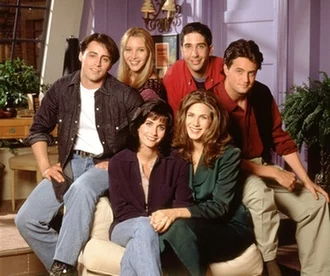First of all,
When it comes to movies, nostalgia has a strong hold on viewers. It may take them to a different historical period, bring back childhood memories, and arouse feelings that have been suppressed for a long time. With its unique cultural zeitgeist, the 1990s are still a major source of inspiration for both moviegoers and filmmakers. The decade is distinguished by its distinct fusion of grunge, neon, and analog appeal; it was a moment when the globe was about to undergo a digital revolution but it managed to maintain its gritty authenticity.
In this context, the Yellow Door ’90s Lo-fi Film Club becomes a shining light for anyone who want to experience the enchantment of that decade via independent film. This piece delves into the world of Yellow Door, examining its history, philosophy, and the films that helped to shape its classic style.
Yellow Door’s beginnings:
The origins of Yellow Door may be found in a little basement in the middle of a busy metropolis. Initially a small group of friends who shared a passion for DIY aesthetics and quirky flicks, the club was founded by a handful of ardent moviegoers who loved everything about the ’90s. After beginning as a laid-back movie night, it quickly developed into a vibrant community that drew members from many backgrounds.
The phrase “Yellow Door” itself evokes mystery and intrigue, alluded to the club’s covert existence and the sense of adventure that lies beyond its doors. It acts as a doorway to a realm where time stops still and projector flicker evokes memories of a bygone era.
Yellow Door’s ethos:
The fundamental value of Yellow Door is a profound admiration for the unadulterated, unadulterated beauty of low-budget films. The club celebrates films filmed on grainy 16mm stock or hand-held camcorders, championing the beauty of imperfection in an era dominated by high-definition images and CGI extravaganzas. It’s an anti-mainstream Hollywood glossy sheen rebellion, a nostalgic embracing of analog warmth and jagged edges.
But Yellow Door is a community based on shared experiences and a passion for storytelling, not merely a celebration of beauty. Members get together to watch movies, but they also stay up late discussing, debating, and analyzing them. There, movie buffs bond with one another and create relationships that go beyond the screen.
The Yellow Door Experience:
Entering through the yellow door is like to entering a time capsule that takes one back to the height of independent filmmaking in the 1990s. Vintage movie posters, neon signs, and an eclectic collection of mismatched furniture decorate the darkly illuminated room. As guests take their seats, there’s a distinct expectancy in the air as the smell of popcorn and memories fills the room.
The films that are screened are a carefully chosen blend of lost treasures, hidden jewels, and cult favorites that are sure to bring back the nostalgia for the ’90s. There is something for every movie enthusiast to enjoy in the selection, which ranges from funny coming-of-age stories to gritty urban tragedies.
However, the spirit of friendship that surrounds every showing is what really sets the Yellow Door experience apart, not simply the movies themselves. Attendees are enthralled in heated conversations over story twists, character motives, and hidden Easter eggs as the credits roll and the lights come up. There is a vibrant interchange of thoughts and viewpoints, driven by a mutual admiration for the craft of filmmaking.
Characterizing Yellow Door Films:
It wouldn’t be a proper talk about Yellow Door without mentioning a few of the classic movies that have been on the screen over the years. These films, which range from independent darlings to cult favorites, perfectly capture the spirit of ’90s low-budget filmmaking and still have an impact on viewers.
“Slacker” (1991) – This meandering slice-of-life film, directed by Richard Linklater, depicts a day in the life of a number of quirky characters in Austin, Texas. Filmed on a tight budget, “Slacker” perfectly captures the handcrafted vibe of independent film from the 1990s, thanks to its unconventional comedy and non-linear story.
“Clerks” (1994): Kevin Smith’s first feature film, “Clerks,” is a low-budget comedy filmed in black and white inside a convenience shop. Driven by witty banter and allusions to popular culture, the movie went on to become a cult classic and a benchmark for independent cinema in the 1990s.
“Kids” (1995) – Written and directed by Harmony Korine and starring Larry Clark, “Kids” provides an honest and unvarnished glimpse into the daily life of teens in New York City. Although it caused controversy when it was first released for showing drug use and teenage sex, the movie is now a potent and thought-provoking examination of young culture.
“Dazed and Confused” (1993) – Richard Linklater’s tribute to youthful rebellion in Texas during the 1970s, with its ensemble cast and sentimental music, perfectly encapsulates young life. Rich in endearing characters and famous dialogue, “Dazed and Confused” has grown to be a cherished classic of 1990s film.
“Buffalo ’66” (1998) – A darkly comic story about obsession and redemption, directed by Vincent Gallo. The picture, which was made on a shoestring budget using 16mm film, has a cult following among independent film enthusiasts because of its unique style and gritty look.
In summary:
In a time of massive streaming services and successful movie franchises, Yellow Door ’90s Lo-fi Film Club is a monument to the strength of independent filmmaking. Fans of cinema are invited to relive the enchantment of ’90s filmmaking one picture at a time at Yellow Door, which provides a haven from the chaos of modern life with its carefully chosen screenings, lively community, and nostalgic ambiance. There will always be yellow doors to explore and low-budget movies to see, so the essence of 1990s cinema will live on.
